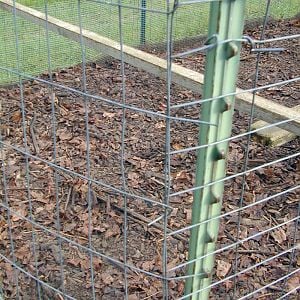Navigation
Install the app
How to install the app on iOS
Follow along with the video below to see how to install our site as a web app on your home screen.
Note: This feature may not be available in some browsers.
More options
You are using an out of date browser. It may not display this or other websites correctly.
You should upgrade or use an alternative browser.
You should upgrade or use an alternative browser.
recommendation to prevent a muddy run during the rainy season
- Thread starter Molliep2
- Start date
More options
Who Replied?Hard to suggest without knowing where on Earth you are at. Many areas don't have same availability of things.
WISHING YOU BEST,,,,,,,,,,,,,,,,,,,,,,,,,,,,,,,,,,,,,,,,and
WISHING YOU BEST,,,,,,,,,,,,,,,,,,,,,,,,,,,,,,,,,,,,,,,,and

I use lots of organic material... pine shavings, rice hulls, leaves, twigs, etc. Depending on how much mud you get, something bigger, like wood chips, might help. For occasional mud puddles (vs. continuous mud), wood pellets can work wonders.
I was wondering what are the best ways to prevent a muddy run during the rainy season. what is the best material to use on the ground in the run?
When my chickens ate the grass down to bare dirt, I covered the dirt with about 2 inches of wood chips. In my case, that was enough to keep the chicken run mud free. However, since then, I have added grass clippings, leaves, more wood chips, etc.... I now have about 18 inches of litter composting in place. I intend to harvest the compost once a year in the fall and put it out in the garden. I just sifted my first batch of chicken run compost last week and it was like black gold for my garden. Hope to have a great garden next year.
You don't have to build up your chicken run litter to 18 inches deep like I did. Even a couple of inches of organic litter is probably enough to keep the chickens up and out of the mud. But even at 18 inches deep, I have no problem walking on the chicken run litter. The top layers remain dry while the lower levels retain the rain water and the material will compost. Another benefit of using organic litter in the run is that your chickens will love scratching and pecking in the litter looking for food to eat. Where I live, I can get wood chips for free at the local landfill and of course the grass clippings and leaves are collected from my yard work. My chicken run has no smell other than a beautiful earthy scent much like a forest floor.
IMO.....Wood Chippingswhat is the best material to use on the ground in the run?
First fix any drainage issue, get rid of any standing water with trenches or keep it from running in with gutters, swales, berms.
My runs have semi-deep litter(cold composting), never clean anything out, just add smaller dry materials on occasion, add larger wood chippings as needed.

The very FIRST thing is to address any drainage issue you have -- places where water pools, where groundwater flows through, or where water pours off building roofs.
Use diversion ditches, grass swales, gutters, re-grading with heavy machinery and/or building up the land with fill dirt as necessary (the latter two options can be surprisingly affordable if you're flexible about timing because contractors will sometimes tack on a small job when in the area for a larger job).
Then add plenty of organic bedding -- wood chips, wood shavings, straw, pine straw, fall leaves, or whatever else is locally available. IMO, a mixture of materials and textures is best to provide free drainage without packing, matting, and the formation of anaerobic pockets.
You can also put out a few intact straw bales and/or some pallets (directly on the ground or up on blocks), to give the chickens a place to sit with dry feet.
Use diversion ditches, grass swales, gutters, re-grading with heavy machinery and/or building up the land with fill dirt as necessary (the latter two options can be surprisingly affordable if you're flexible about timing because contractors will sometimes tack on a small job when in the area for a larger job).
Then add plenty of organic bedding -- wood chips, wood shavings, straw, pine straw, fall leaves, or whatever else is locally available. IMO, a mixture of materials and textures is best to provide free drainage without packing, matting, and the formation of anaerobic pockets.
You can also put out a few intact straw bales and/or some pallets (directly on the ground or up on blocks), to give the chickens a place to sit with dry feet.
Great idea for any run,,, even those without muddy issuesYou can also put out a few intact straw bales

Also serves as an excellent wind block. Many peeps purchase straw bales as Halloween decor, and then they place curbside afterwards. Great for CHICKEN RUNS and GARDENS,,,,,,,,,,, and FREE



Great idea for any run,,, even those without muddy issues
Also serves as an excellent wind block. Many peeps purchase straw bales as Halloween decor, and then they place curbside afterwards. Great for CHICKEN RUNS and GARDENS,,,,,,,,,,, and FREE
Free bedding is good bedding.

New posts New threads Active threads
-
Latest threads
-
Every body post your feed tricks PLEASE
- Started by mapel walnut
- Replies: 1
-
-
-
Will I Ever Be Done With The Urge To Buy More Chicken stuff!
- Started by Vickie9304
- Replies: 3
-
-
-
Threads with more replies in the last 15 days
-
×

